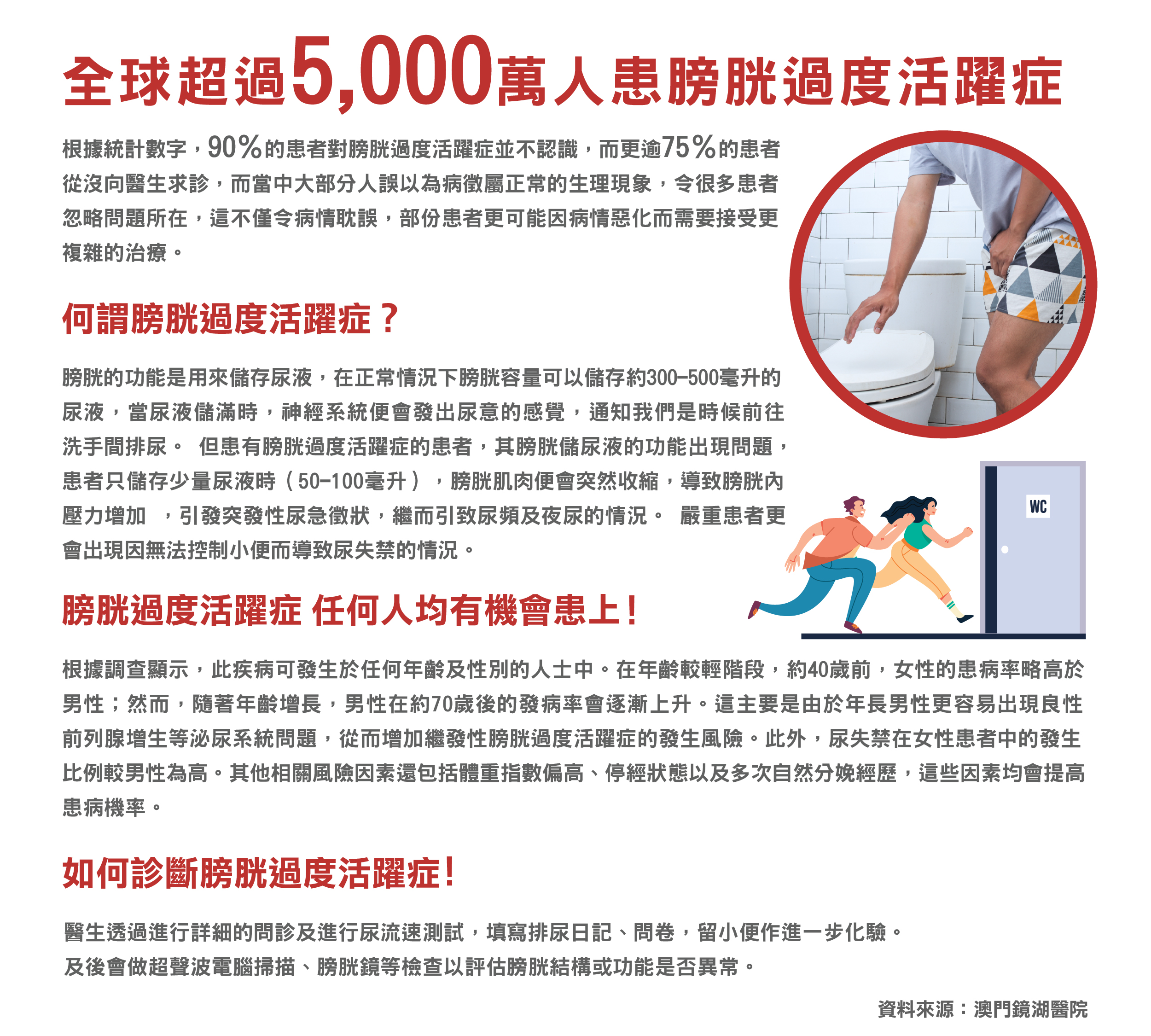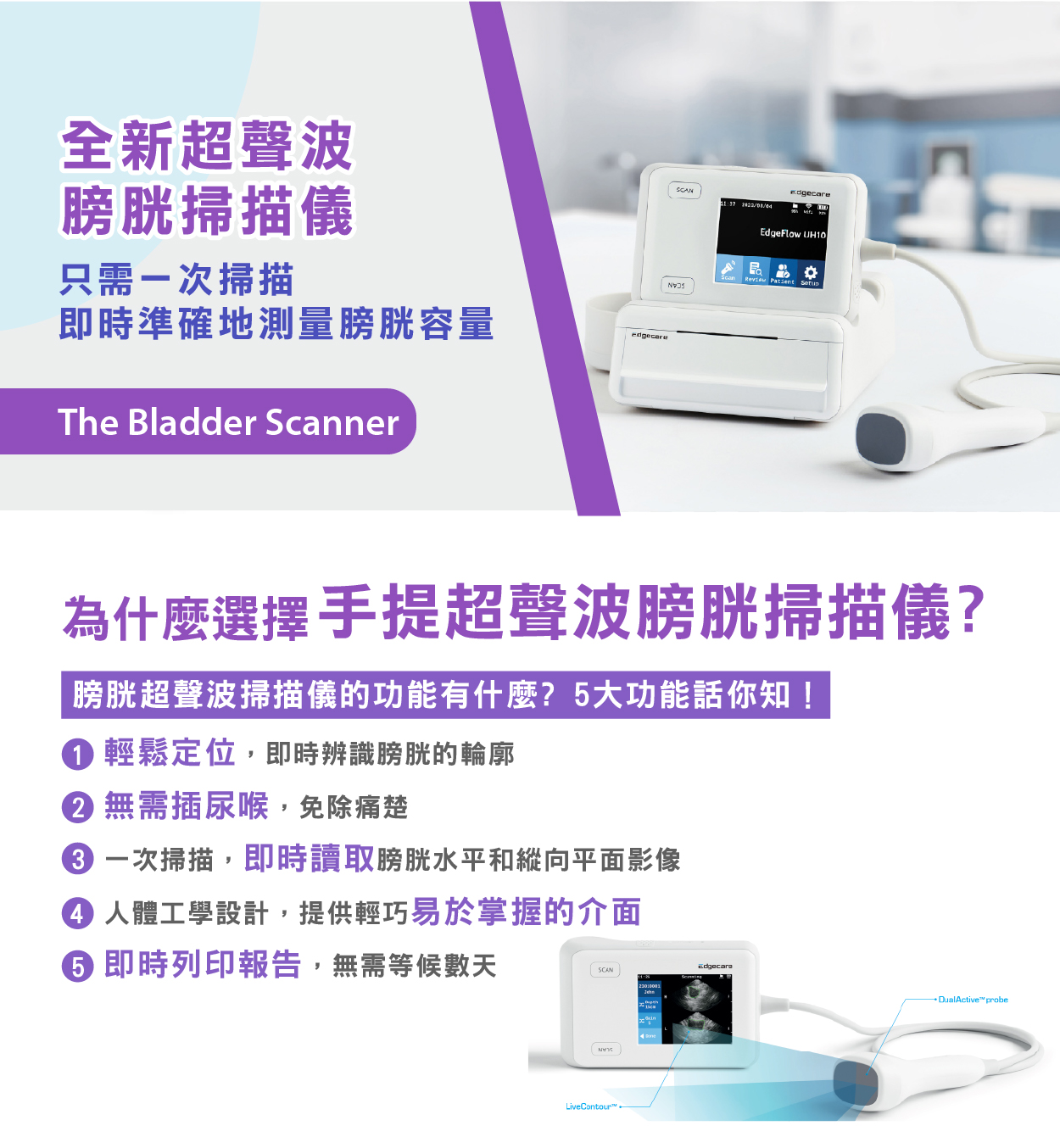
SCLink 08-2025

#樂齡科技 #創新科技 #醫療科技 #膀胱過度活躍症 #超聲波膀胱掃描儀 #導尿管 #SCLink
WhatsApp Us
Over 50 million people worldwide suffer from an overactive bladder, and 90% are unaware!

Over 50 million people worldwide suffer from an overactive bladder, and 90% are unaware!
According to statistics, 90% of patients do not recognise an overactive bladder, and over 75% have never consulted a doctor. Many mistakenly believe that the symptoms are everyday physiological phenomena, leading to a neglect of the issue. This not only delays treatment but may also result in some patients needing more complex interventions due to worsening conditions.
What is Overactive Bladder?
The bladder’s function is to store urine. Under normal circumstances, the bladder can hold about 300-500 millilitres of urine. When the bladder is full, the nervous system sends signals indicating the need to urinate. However, patients with overactive bladder experience issues with urine storage; even a small amount of urine (50-100 millilitres) can cause the bladder muscles to contract suddenly, increasing internal pressure and resulting in urgent urges to urinate, frequent urination, and nocturia. In severe cases, patients may experience incontinence due to an inability to control urination.
Anyone Can Develop Overactive Bladder!
Surveys indicate that this condition can affect individuals of all ages and genders. In younger age groups, particularly before age 40, the prevalence is slightly higher in women. However, as age increases, the incidence in men rises after around 70 years of age. This is primarily due to older men being more prone to urinary system issues like benign prostatic hyperplasia, which increases the risk of secondary overactive bladder. Moreover, the occurrence of incontinence is higher in female patients. Other related risk factors include a high body mass index, menopause, and multiple natural childbirth experiences, all of which can elevate the likelihood of developing the condition.
How is Overactive Bladder Diagnosed?
Doctors diagnose overactive bladder through detailed patient interviews, urine flow rate tests, completion of a urinary diary, questionnaires, and collection of urine samples for further testing. Additional examinations, such as ultrasound scans and cystoscopy, may be performed to assess any structural or functional abnormalities of the bladder.
Source: Kiang Wu Hospital, Macau
New Ultrasound Bladder Scanner
Accurately Measure Bladder Capacity with Just One Scan
Why Choose the Portable Ultrasound Bladder Scanner?
What functions does the bladder ultrasound scanner have?
Here are five key features:
1) Easy positioning, instantly identifies the outline of the bladder
2) No need for catheterization, eliminating discomfort
3) One scan provides immediate readings of bladder level and longitudinal images
4) Ergonomic design, offering a lightweight and easy-to-handle interface
5) Instant report printing, no need to wait for days
Enjoy Every Day with Ease
Patented Two-Way Standard Balloon Catheter Secure and Comfortable After Fixation
Transparent Design
Features a clear, transparent body for easy visibility during procedures.
Convenient Valve
Equipped with a valve for seamless connection to a Luer or Luer-Lock syringe, ensuring effortless balloon inflation.
Enhanced Visibility
With a radiopaque catheter tip and an x-ray contrast stripe along the shaft, this catheter is easily visible on x-ray images, providing added safety and precision.







